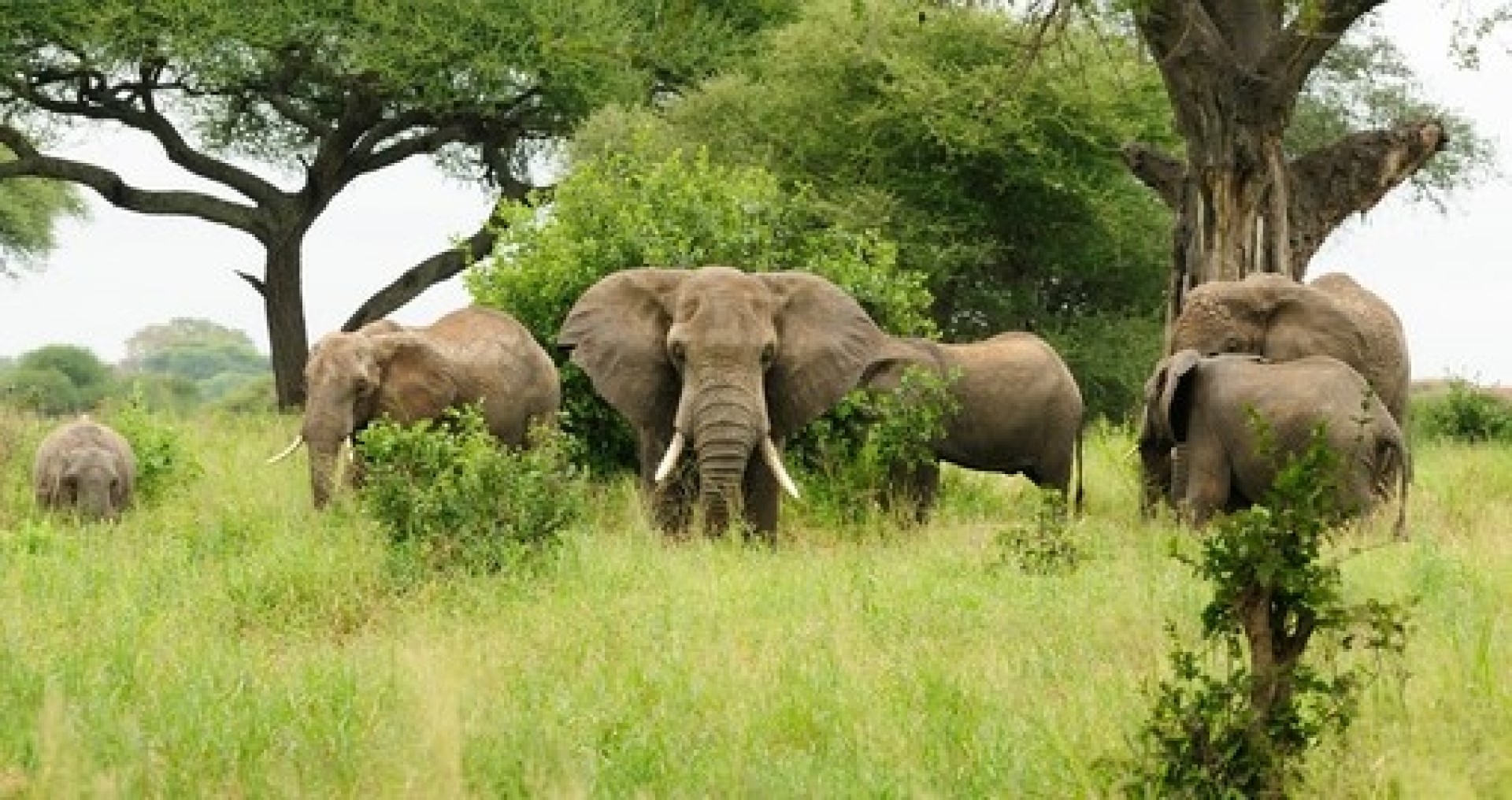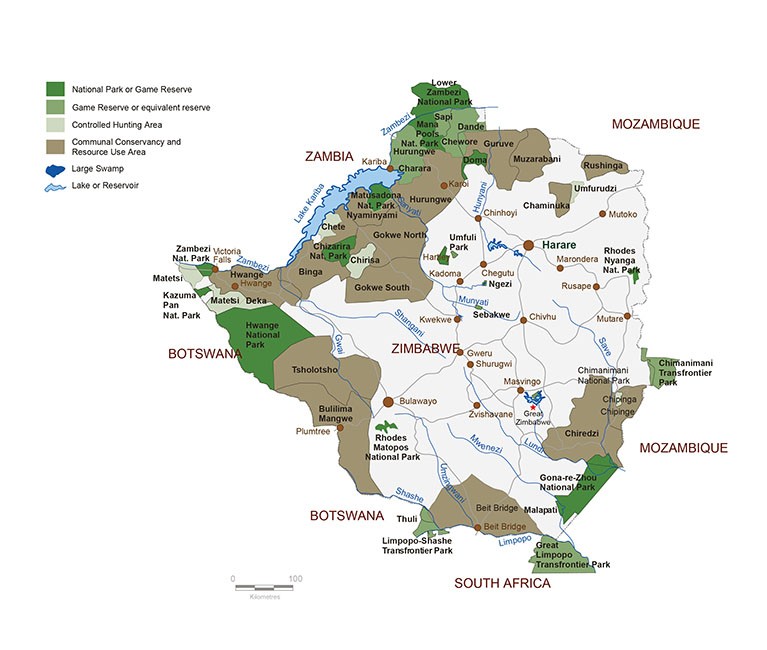
Zimbabwe
Once called the bread basket of Africa, and with wildlife that would bring huge numbers of tourists, much of that is gone. Whether you subscribe to the view that the majority of the blame lies with Robert Mugabe who ran the country for 4 decades, or something else, it is an unfortunate fact that it is not as it was.
Despite this, Zimbabwe is returning to its former glory even if it is taking time. There are a wide range of places that are of particular note.

Perhaps most excitingly, Zimbabwe has reserves in arguably 2 of the most exciting conservation initiatives on the continent in both the Limpopo Transfrontier park, and the KAZA transfrontier park.
What is increasingly recognized, is that it is far to great a cost for any one country to protect enough land to create viable populations of animals such as lions. However, by countries protecting land on their borders, vast areas can be created.
The Limpopo transfrontier park currently consisting of 35,000 square km, but with plans of increasing this to 99,000. This is not aimed to be all total wilderness. To the contrary, the Limpopo national park (a small part of the transfrontier park has roughly 20,000 people living within it). The general idea of transfrontier parks is to link reserves, re-establish old migration corridors and generally make the wildlife populations capable of sustaining any problems that might occur. At the same time, the aim is to change things so that the earning potential of the whole park and each little bit is increased, thereby giving a good future to the people who live around these reserves.
The Kalahari Zambezi (KAZA transfrontier park) is even more ambitious. Covering a combined area of 520,000 square km (200,000 square miles), and will take in a great portion of the west side of Zimbabwe. Like the Limpopo, there will be areas which are inhabited, but it will combine vast numbers of reserves national parks hunting areas and conservancies. Like the Limpopo, people are not cut out, and around 2.7 million live within its boundaries – mostly along the Okavango and Zambezi rivers.
Our only destinations in Zimbabwe at the moment is in the northern part of the Limpopo transfrontier park. Click here to visit this section of the Limpopo Transfrontier park page
Zimbabwe is in the process of moving hundreds of elephants and two prides of lions from hwange National Park due to drought drying up their water pools, as well as shipping dozens to zoos in china
- Tim
- December 22, 2019
Southern African countries Zimbabwe, Botswana, Angola and Namibia are calling for an end to the ban on ivory sales
- Tim
- July 20, 2019
Elephant death mystery solved, but no nearer to a solution
- Tim
- November 2, 2023
Might a raise in the minimum age for lion trophy hunting help?
- Tim
- March 11, 2023
Guard dogs to save Namibian Cheetah?
- Tim
- September 29, 2022
Is the government finally going to ban hunting trophy import
- Tim
- December 10, 2021
The website was hacked! nothing lost, and wildlife tourism to Africa can return
- Tim
- October 7, 2021
Can Cheetah be saved by moving them around?
- Tim
- March 12, 2021
Can hunting ever be ethical? How can it work?
- Tim
- December 22, 2020
Live sightings map coming soon
- Tim
- December 9, 2020
Cheetah population in South Africa has almost doubled in 9 years-how?
- Tim
- October 15, 2020
Living alongside….. Lions
- Tim
- June 11, 2019
Rhino hunter in the Kruger National Park appears to have been killed by elephant and then eaten by lions
- Tim
- April 25, 2019
Transfrontier parks – allowing wildlife to exist closer to how it did before humans arrived
- Tim
- February 10, 2018
Does hunting pay its way?
- Tim
- February 5, 2018
Review of Kruger National Park
- Tim
- January 6, 2018